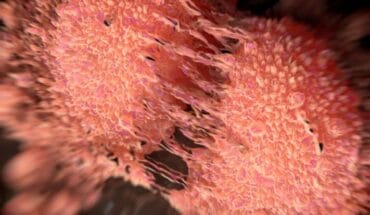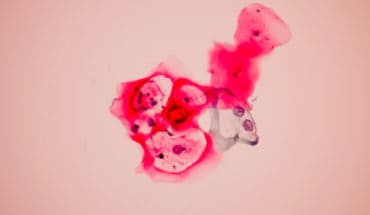The holy grail in oncology is ‘how do you cure cancer that as spread?’
At the moment, all types of cancer, except a few rare malignancies, cannot be cured after they have spread beyond the original site. Chemotherapy can wipes out vast swathes of cancer cells and keep them at bay, but is usually used in conjunction with surgery and radiotherapy when cancer has metastasised to different parts of the body. Even then, for the majority of patients, their disease will eventually kill them.
The few malignancies that can be cured by chemotherapy after they have spread, (but not always) include testicular cancer, gestational choriocarcinoma (a rare cancer of the placenta), Hodgkins disease and high-grade lymphomas. But everything else – and I speak as a medical oncologist treating pancreatic, liver, gall bladder and colon cancer with chemotherapy – will need to be constantly monitored and attacked when new tumours arise.
I see many patients who have cancer that has already spread and they can often enjoy many years of good quality life, but I wish I could give them a permanent solution with a drug concoction that would kill of cancer cells for good.
Fortunately, I am hopeful that a solution will be found however, and one day, chemotherapy alone will cure metastatic cancer.
Researchers have picked up on the fact that the kinds of cancer that can be destroyed by chemicals alone, share a common characteristic. They are similar to embryonic stem cells in that their cells have fragile DNA that is easily killed off. To give you some idea of what I mean, during foetal development, large changes occur in the sensitivity of the developing embryonic cells to chemotherapy agents. At the commencement of embryogenesis, foetal cells have extreme sensitivity to chemotherapy agents, as demonstrated by the ability of very small doses of methotrexate to produce rapid cell death in ectopic pregnancies.
Chemotherapy treatment given to the mother in the first trimester of pregnancy, whilst organ formation is taking place, also shows a clear association with foetal loss and increased risk of foetal malformations. By contrast, during the second and third trimester, when organ formation is complete, the foetus exhibits a similar degree of resistance to chemotherapy to that of normal adult tissues; chemotherapy can then be given in relative safety with minimal toxicity or long-term risks to the foetus. These observations suggest that more primitive tissues have an intrinsic sensitivity to chemotherapy that is lost during maturity.
So what mechanisms are involved in the retention of sensitivity to chemotherapy, and how could these features be exploited?
Most chemotherapy drugs are intracellular poisons; they disrupt important cellular processes by inducing various damaging lesions in DNA. These processes are followed by the induction of ‘suicidal’ cell death or ‘apoptosis’. The key difference between these two groups of malignancies probably lies in the link between the first and second steps—damage to the cell, and induction and execution of cell death, respectively.
A number of studies have demonstrated that chemotherapy-curable malignancies have an increased intrinsic sensitivity to cell death by chemotherapy compared with the common malignancies.
So how can this help us to improve the curability of solid tumours whose survival hasn’t improved too much over the last 40 years of chemotherapy drug development? It seems that if we can prime solid tumour cells to act more like embryonic cells so that they are super sensitive to chemotherapy and suicidal cell death, then we can start being able to cure patients with cancer that has spread around their bodies. Future technological developments could alter the cancer cells’s DNA using gene therapy techniques and drugs are now being trialled which encourage aptosis in cancer cells.
We have a long way to go to curing common solid tumours with chemotherapy. This is will only come from understanding where chemotherapy does work and using this information to exploit weaknesses in solid tumours.
- How do you cure cancer that has spread? - 3rd November 2016






